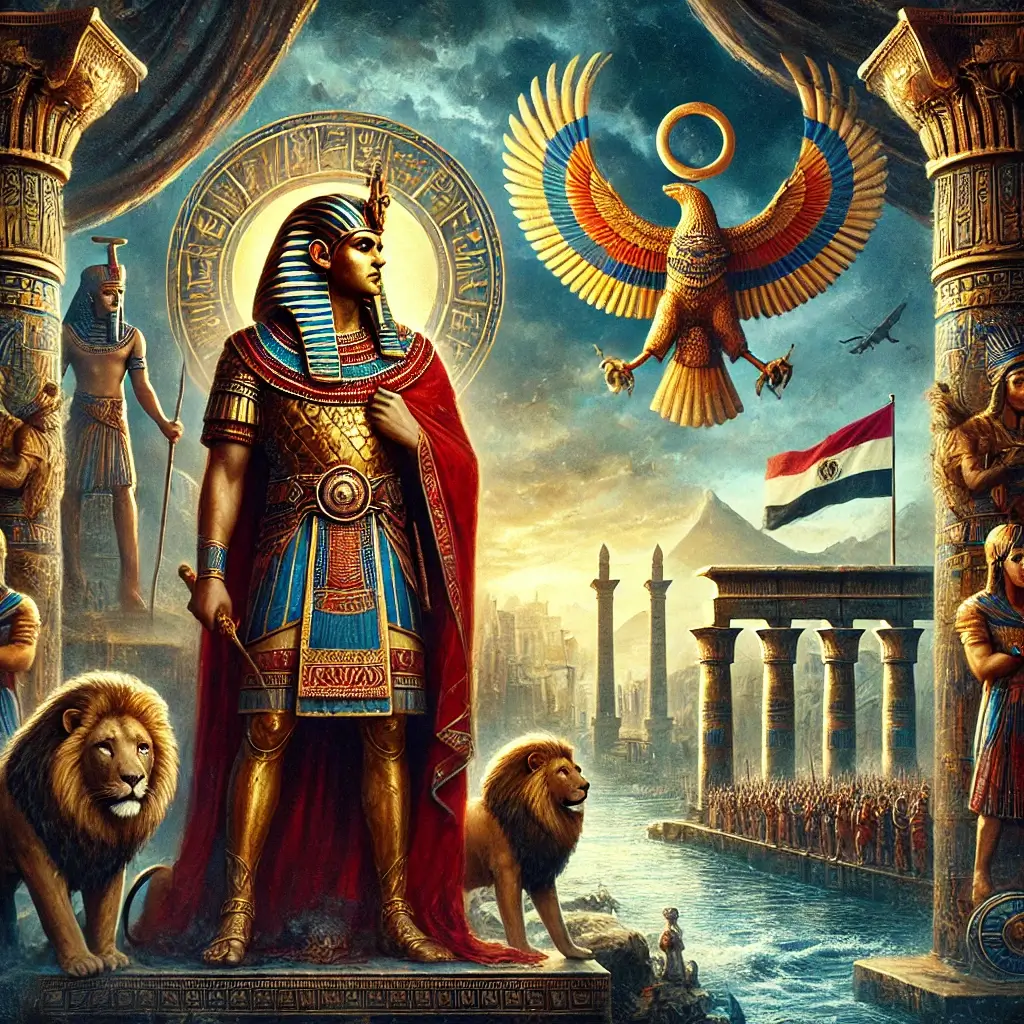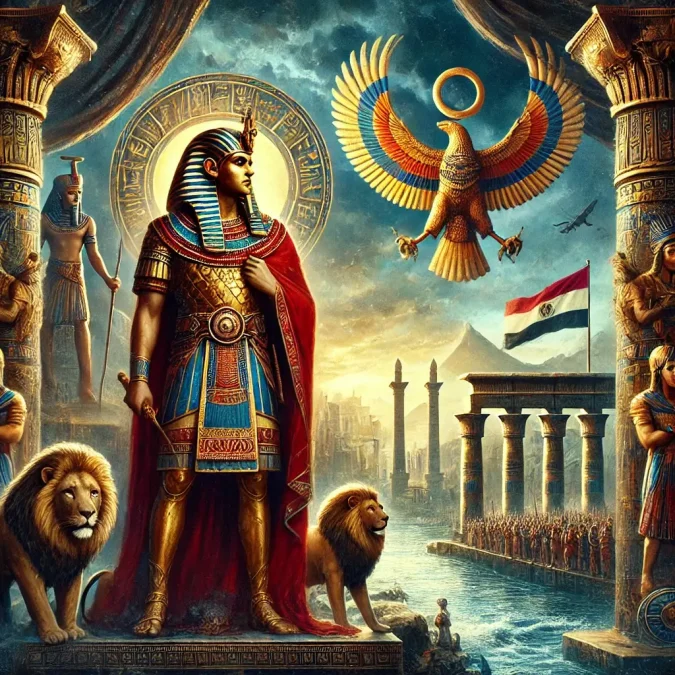
The Thirty-First Dynasty of Egypt, also known as Dynasty XXXI, the 31st Dynasty, or the Second Egyptian Satrapy, was effectively a satrapy of the Achaemenid Persian Empire between 343 BC and 332 BC. This period of Egyptian history began with the reconquest of Egypt by Artaxerxes III, the King of Persia, and his subsequent crowning as Pharaoh of Egypt. The Thirty-First Dynasty was marked by foreign rule, significant challenges to native Egyptian traditions, and ultimately the conquest of Egypt by Alexander the Great, which ended Persian domination. This period represents the last phase of Persian control over Egypt before the rise of Hellenistic rule.
In this article, we will explore the historical background of the Thirty-First Dynasty, provide a detailed account of each of its rulers, and examine the political, cultural, and economic developments that occurred during this final period of Persian rule over Egypt.
Historical Background of the Thirty-First Dynasty
The Thirty-First Dynasty of Egypt followed the fall of the Thirtieth Dynasty, the last native Egyptian dynasty, which ended in 343 BC when Egypt was invaded by Artaxerxes III, the Achaemenid king of Persia. The Thirtieth Dynasty had been established by Nectanebo I, who sought to resist Persian reconquest and maintain Egypt’s independence. However, despite the efforts of Nectanebo II, the last ruler of the Thirtieth Dynasty, the powerful Persian forces led by Artaxerxes III succeeded in defeating the Egyptian army and bringing Egypt back under Persian control.
The Thirty-First Dynasty is often referred to as the Second Egyptian Satrapy because Egypt was effectively a province, or satrapy, of the Achaemenid Empire during this period. The Persian rulers faced significant challenges in governing Egypt, including resistance from the native Egyptian population and internal power struggles within the Achaemenid Empire itself. Despite their efforts to integrate Egypt into the broader Achaemenid administrative system, the Persian rulers were never able to fully pacify the country, and their rule was marked by widespread discontent and rebellion.
The Thirty-First Dynasty came to an end in 332 BC when Egypt was conquered by Alexander the Great, who defeated the Persian forces and established himself as the new ruler of Egypt. This marked the beginning of the Hellenistic period in Egyptian history, during which the country was ruled by the Ptolemaic dynasty, a Macedonian Greek family descended from one of Alexander’s generals.
The Rulers of the Thirty-First Dynasty
The Thirty-First Dynasty was ruled by a series of Achaemenid kings who held the title of Pharaoh of Egypt. Below, we provide an overview of each ruler of the dynasty and their significant achievements.
1. Artaxerxes III (343–338 BC)
Artaxerxes III, also known as Ochus, was the founder of the Thirty-First Dynasty and the ruler who reconquered Egypt in 343 BC. Artaxerxes III’s military campaign against Egypt was a major undertaking, and his victory over Nectanebo II marked the end of native Egyptian rule. Following his victory, Artaxerxes III was crowned as Pharaoh of Egypt, and he sought to reestablish Persian control over the country.
Artaxerxes III’s reign in Egypt was characterized by efforts to consolidate Persian authority and suppress any resistance from the native population. He implemented harsh measures to prevent rebellion, including the dismantling of fortifications and the imposition of heavy taxes on the Egyptian people. Artaxerxes III also sought to control the powerful priesthoods of Egypt, which had been a source of resistance to Persian rule during previous periods of Achaemenid control.
Despite his efforts to maintain control over Egypt, Artaxerxes III’s reign was marked by widespread discontent and rebellion. His policies were deeply unpopular with the Egyptian population, who resented the heavy taxation and the lack of respect for their cultural and religious traditions. Artaxerxes III’s reign came to an end in 338 BC when he was assassinated, possibly as part of a plot orchestrated by members of his own court.
2. Arses (338–336 BC)
Arses, also known as Artaxerxes IV, succeeded his father Artaxerxes III as Pharaoh of Egypt and King of Persia. Arses was relatively young when he came to power, and his reign was marked by political instability and challenges to his authority. The assassination of Artaxerxes III had weakened the central authority of the Achaemenid Empire, and Arses faced significant challenges in maintaining control over the vast territories of the empire, including Egypt.
Arses’s reign was brief and largely uneventful, as he struggled to assert his authority and deal with the internal power struggles that plagued the Achaemenid court. His attempts to maintain control over Egypt were largely unsuccessful, and he faced resistance from both the native Egyptian population and rival factions within the Persian administration. In 336 BC, Arses was assassinated, and his death marked the end of his short and troubled reign.
3. Darius III (336–332 BC)
Darius III, also known as Codomannus, was the last ruler of the Thirty-First Dynasty and the final king of the Achaemenid Empire. Darius III came to power following the assassination of Arses and sought to restore stability to the Achaemenid Empire. However, his reign was marked by significant challenges, including the rise of Alexander the Great, who launched a military campaign to conquer the Persian Empire.
Darius III’s reign in Egypt was characterized by his attempts to maintain control over the country while dealing with the growing threat posed by Alexander’s forces. Despite his efforts to defend the Achaemenid Empire, Darius III suffered a series of defeats at the hands of Alexander, including the battles of Issus and Gaugamela. In 332 BC, Alexander the Great entered Egypt unopposed, and the Persian forces in the country surrendered without a fight. Darius III was unable to prevent the loss of Egypt, and he was eventually defeated and killed by his own men in 330 BC.
The conquest of Egypt by Alexander the Great marked the end of the Thirty-First Dynasty and the beginning of the Hellenistic period in Egyptian history. The fall of the Achaemenid Empire and the rise of Alexander’s empire brought significant changes to Egypt, as the country became part of the broader Hellenistic world and was subsequently ruled by the Ptolemaic dynasty.
Persian Rule and Egyptian Resistance
The Thirty-First Dynasty of Egypt was characterized by foreign domination, widespread discontent, and resistance from the native Egyptian population. The Achaemenid rulers faced significant challenges in governing Egypt, including the need to suppress rebellion and maintain control over a population that resented foreign rule. Despite their efforts to integrate Egypt into the broader Achaemenid administrative system, the Persian rulers were never able to fully pacify the country, and their rule was marked by ongoing resistance and unrest.
Administrative Reforms and Economic Policies
The Persian rulers of the Thirty-First Dynasty implemented several administrative reforms in an attempt to improve the governance of Egypt. Artaxerxes III, in particular, sought to strengthen Persian control over the country by appointing loyal officials to key positions and imposing heavy taxes on the population. The wealth extracted from Egypt was used to support the broader Achaemenid Empire, which was engaged in a series of military conflicts during this period.
Despite these efforts, the administrative policies of the Persian rulers were deeply unpopular with the Egyptian population. The heavy taxation and the presence of foreign officials in positions of power were sources of resentment, and the lack of respect for Egyptian cultural and religious traditions further fueled discontent. The Persian rulers were unable to establish a stable and effective administration in Egypt, and their rule was characterized by ongoing challenges to their authority.
Cultural Suppression and Religious Policies
The relationship between the Persian rulers and the native Egyptian population was also shaped by cultural and religious factors. The Achaemenid kings adopted the title of Pharaoh and participated in some traditional Egyptian ceremonies in an attempt to legitimize their rule. However, their efforts to integrate themselves into Egyptian society were largely unsuccessful, as their policies were seen as disrespectful to Egyptian cultural and religious traditions.
Artaxerxes III, in particular, implemented harsh measures to suppress the power of the Egyptian priesthoods, which had been a source of resistance to Persian rule. Temples were looted, and religious leaders were stripped of their influence, which further alienated the Egyptian population. The lack of respect for the traditional gods and religious institutions of Egypt contributed to the widespread discontent and resistance that characterized the Thirty-First Dynasty.
The Decline and Fall of the Thirty-First Dynasty
The decline of the Thirty-First Dynasty was closely linked to the weakening of the Achaemenid Empire as a whole and the rise of Alexander the Great. The assassination of Artaxerxes III and the subsequent power struggles within the Achaemenid court weakened the central authority of the empire, making it difficult for the Persian rulers to maintain control over distant territories like Egypt. The rise of Alexander the Great and his military campaign against the Persian Empire further destabilized the region and ultimately led to the collapse of Persian rule in Egypt.
In 332 BC, Alexander the Great entered Egypt without facing any significant resistance, and the Persian forces in the country surrendered. Alexander’s conquest of Egypt marked the end of the Thirty-First Dynasty and the beginning of a new era in Egyptian history. Under Alexander and his successors, Egypt became part of the Hellenistic world, and the country was subsequently ruled by the Ptolemaic dynasty, which sought to blend Greek and Egyptian cultural traditions.
Conclusion
The Thirty-First Dynasty of Egypt, also known as the Second Egyptian Satrapy, was a significant period in the history of ancient Egypt. Established by Artaxerxes III following the reconquest of Egypt in 343 BC, the dynasty was marked by foreign domination, widespread discontent, and resistance from the native Egyptian population. The rulers of the Thirty-First Dynasty, including Artaxerxes III, Arses, and Darius III, faced significant challenges as they sought to maintain control over Egypt and integrate it into the broader Achaemenid Empire.
Despite their efforts, the Persian rulers were never able to fully pacify Egypt, and their rule was characterized by ongoing resistance and unrest. The fall of the Thirty-First Dynasty in 332 BC, following the conquest of Egypt by Alexander the Great, marked the end of Persian rule and the beginning of the Hellenistic period in Egyptian history. The legacy of the Thirty-First Dynasty lies in its role as the final phase of Persian control over Egypt and the enduring resistance of the Egyptian people to foreign domination.
